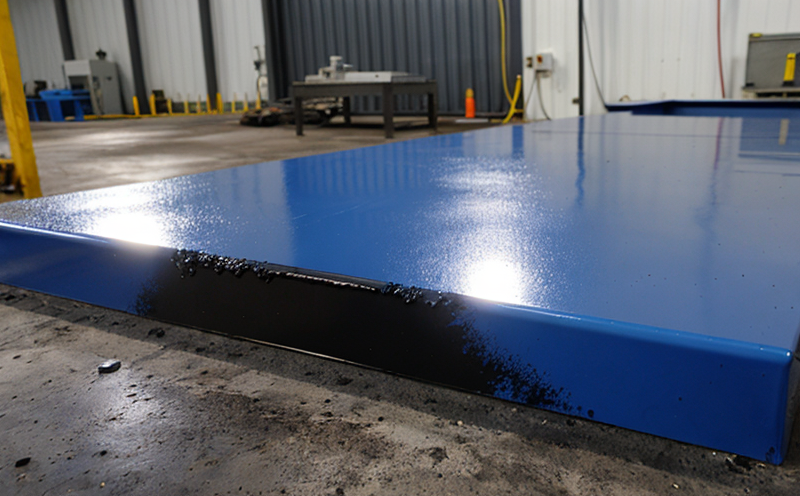ISO 14577 Instrumented Indentation Hardness Testing of Coatings
The ISO 14577 standard provides a robust framework for determining the hardness of thin surface coatings using instrumented indentation. This method is particularly useful in industries dealing with metallurgy and material testing, where understanding coating properties such as adhesion, integrity, and durability is critical.
Instrumented indentation involves applying a defined force to the coating's surface via an indenter tip, followed by measuring the resulting depth of indentation. The hardness value is calculated using specific formulae detailed in ISO 14577. This approach ensures accurate measurement even for very thin coatings that might otherwise be challenging to test with conventional methods.
The technique is widely recognized for its precision and repeatability, making it a cornerstone in quality control processes. It allows for the assessment of coating properties under controlled conditions, which is essential for ensuring product performance over time. The results are highly relevant for compliance purposes, especially when dealing with standards that mandate specific hardness limits.
Instrumented indentation can be used to evaluate various types of coatings including electroplated layers, sprayed coatings, and chemical conversion films. These coatings often serve critical functions such as corrosion protection or wear resistance, necessitating precise measurement techniques like those provided by ISO 14577.
The process involves several key steps: preparation of the specimen, selection of appropriate indenter geometry, application of defined loads, and measurement of indentation depth and width. Proper sample preparation is crucial to ensure accurate readings; this typically includes cleaning the surface thoroughly before testing.
For electroplated coatings, for instance, ensuring that the underlying metal substrate does not affect the test results is paramount. Similarly, when dealing with sprayed coatings, uniformity across the entire coating thickness must be verified prior to testing. Once prepared, samples are mounted on suitable fixtures and placed in a controlled environment if necessary.
The indenter geometry plays a significant role in determining the hardness value; different geometries yield varying hardness scales depending on their radius and angle. Commonly used indenters include spherical tips with radii ranging from 0.2 mm to 1.6 mm, conical tips with angles of 45° or 75°, and pyramidal tips.
The application of defined loads ensures consistent test conditions that are repeatable across multiple specimens. Load values can range widely based on the coating type and thickness; for example, lighter loads may be used for thinner coatings to avoid deformation, while heavier loads might be necessary for thicker or more rigid materials.
After indentation, the depth and width of the indentation mark are measured using optical profilers or other suitable equipment. These measurements form the basis for calculating the hardness value according to ISO 14577 formulas which take into account both the applied load and indentation dimensions.
The resulting hardness values provide valuable insights into coating quality, helping manufacturers make informed decisions about process improvements or material selection. In addition to quality assurance, these tests are increasingly being used in research environments where understanding how different factors affect coating performance is essential.
By employing ISO 14577 instrumented indentation hardness testing, industries can ensure consistent and reliable results that meet regulatory requirements and enhance product reliability.
Applied Standards
| Standard Number | Description |
|---|---|
| ISO 14577:2018 | Guidelines for the determination of hardness by instrumented indentation. |
Benefits
- Precision in measurement, especially for thin coatings.
- Repeatability ensuring consistent results across multiple tests.
- Compliance with international standards enhancing trustworthiness.
- Potential for process optimization by identifying areas needing improvement.
- Evaluation of coating adhesion and integrity without damaging the substrate.
Quality and Reliability Assurance
ISO 14577 instrumented indentation hardness testing plays a vital role in maintaining high standards of quality assurance within metallurgy and material testing sectors. By adhering to this standardized method, laboratories can ensure that their testing results are accurate, reliable, and consistent with industry best practices.
The technique allows for the precise evaluation of coating properties under controlled conditions, which is crucial for ensuring product performance over time. The ability to measure coatings accurately helps in identifying any issues early on, allowing manufacturers to take corrective actions promptly.
In addition to quality assurance, these tests are increasingly being used in research environments where understanding how different factors affect coating performance is essential. This knowledge can lead to significant advancements in technology and manufacturing processes.
Compliance with ISO 14577 ensures that laboratories meet strict international standards, thereby enhancing the trustworthiness of their results. This is particularly important when dealing with regulatory requirements or participating in global markets where consistency in testing methodologies is highly valued.
The use of this standardized method also allows for easier comparison between different batches or suppliers of materials, enabling better decision-making based on objective data rather than subjective assessments.





